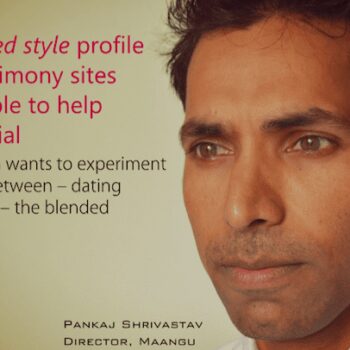In July we hosted The Transition, a webinar series that brought together 15 investors, operators and founders across 3 weeks to discuss the hardest parts of early-stage company building – idea through Series A. Over 400 of you tuned-in live, but in case you missed it, you can watch all of the sessions on-demand here.
On our third panel – Making the leap from Seed to Series A – Forward partner Matthew Bradley, was joined by investors Sasha Astafeyva and Yvonne Bajela and Series A+ founders Ross Bailey of Appear Here, and Gauthier Van Malderen.
The conversation was rife with nuanced insights from seasoned investors and seasoned founders – keep reading to discover what those were and find links to further reading.
1. Series A can be more difficult to define.
Sasha: Series A isn’t actually a clear-cut round. If founders have the luxury of being repeat-founders or have an incredibly compelling product proposition in an incredibly compelling market, raising a series A round that looks more like a classic seed is possible. For the classic later-stage series A rounds, investors are looking for proof of concept. Typically, that means having early proof of product-market fit and having a clear route to acquiring customers.
2. If you’ve burned through your angel and seed round without demonstrating customer validation you’ve got a problem.
Yvonne: Investors are looking at a clear path to growth and scale. So it’s really important to show that throughout the ‘seed’ phase you’ve experimented with different distribution strategies, learnt from it, and are now committing to the 1 or 2 that will scale.
3. Build relationships well before you’re ready to raise. Your investor needs to know you to make a compelling case at an investment committee.
Gauthier: Investors are totally different. At angel and seed, it’s about passion and the team. At Series A you need to be much clearer on what you’ve done, and what you’re trying to do, as well as being air-tight on the data and financials.
It’s also really important to understand how much an investor can realistically invest. If they have a 150 million fund, then the maximum ticket they’ll be able to do is like £5 million. So to save time, make sure you’re targeting the right investor at the right stage.
Ross: By Series A, we were getting traction so it was actually a little easier to convince ‘A’ investors than our angel investors. Having said that, we’d started to build series A relationships at the seed stage, so by the time we were ready for a Series A round, we were able to lean on those relationships, and update them on the great progress we’d made. We were able to engineer some competitive tension too. For one of the A investors, I’d met one of the partners every few months for dinner. In the end, we were able to drive a deal through because we’d built a great – almost casual – relationship. I was so transparent about what I was struggling with, and what we were trying to solve.
Sasha: In all investment contexts I’ve been in, one of the questions that come up is “How long have you known the founder?” or “How long have you known the company? When is the last time you saw them?”. So if you’re going in and meeting someone for the first time, and you’re saying “I want a term sheet 3 weeks from now” that’s a tough bar to set for some VC’s. That is, unless you’re a master FOMO creator and are an exception to the rule.
Ross: Every round we’ve had led, has been from an investor who knew us before.
4. To drive urgency for the deal, run a strict process and set the rules of engagement.
Gauthier: Get your pipeline of 50-60 investors. Reach out to them and communicate your process to them, letting them know when you want to close the round. Without a timeline, you can’t drive urgency for the deal.
Ross: I listed out all of the people we were meeting, and set a cap of 7 meetings. And I made rules, i.e. if I’m going to get to meeting four, I need to have a term sheet. If I got to meeting six or seven and I didn’t have a term sheet, they’d be off the list. Even the most ruthless investors will very rarely say no. They don’t want to close doors. So, you have to set those boundaries.
Gauthier: VC’s are always going to say “yes, interesting, come back in a few weeks.” So you’ve got to be tough with saying no. “Interest” isn’t a term sheet. If they were that interested they would give you a term sheet.
Sasha: This is spot on. This also makes it easier for investors to understand the next steps. You’re creating an environment where people know the rules of engagement and that’s the best way to do it.
5. You’ll become a ‘real CEO’ after you raise Series A. Get ready to learn new skills.
Gauthier: When I started I was a generalist. I did fundraising, marketing, publishing, etc. Going from 10 people to 75, you have to let go of a lot of things. Hire the best people you can, and let them fly. Now, post-Series A I focus my time on what’s core. For me, that’s our people. They can make the biggest difference to your business – and are my absolute priority. I spend 50% of my time on people, meetings, setting the strategy and the goals. 10% is fixing drama. And the rest is fundraising, talking to investors, and PR.
Ross: I’d agree – pre-series A you’re not really a CEO in the classic sense. You just run around doing everything. Even when you grow to 20-30 people, you’re still doing a lot of execution. Whereas as you grow, it’s much more about being an executive of executives, and helping to steer, encourage, and free people up to deliver their best work. Pre-Series A, I was the sales guy. Post-Series A I became the person that’s looking at where the business is going, not what is going on inside.
6. Only take advice from people who have done it before.
Gauthier: I have difficulty raising money from someone who has never built a business before. I have angel investors like Alex Chesterman, and given he’s built a $2.2 billion company, I can learn more from him in 30 minutes than I can from listening to hours of podcasts. If you can, choose investors that can also be a coach for you.
Ross: The people that were on the phone to me once a week during the COVID crisis, were the real estate entrepreneurs who ran companies through the 2008 crisis. They taught me how to build back and build better, and make the most out of the opportunities that a crisis creates. Equally, at the bigger funds, the partners that have been operators are always the most valuable around the board table.
In many ways, a board is like a critical friend. They are pushing you to do better continually. Picking a partner whose opinion you trust, is critical.
7. Let the investors set the price.
Yvonne: Be careful not to overvalue your company. Let the investors put the offer on the table. You don’t need to go in with a set value in mind. I’ve worked alongside a company that wasn’t able to raise Series A because they were dead-set on a valuation that was just too high.
8. It’s easier to increase the size of your round than it is to decrease it. If in doubt – set a range.
Sasha: It’s easier to increase the size of your round. It’s harder to decrease the size of your round. When you’re deciding how much to raise, be careful about how you anchor and where you set that size of the raise. It’s easier for VC’s to offer your money, but once it starts looking like you’re decreasing the size of the round, the signalling of that is negative, and it can derail your whole process.
As a founder, you should be looking at dilution. Let’s say that most series A rounds are, 20% dilution on average. If you were raising a £10million round, it means you think you’re valued at £50 million. So the size of the round is an anchor for the valuation that you think should be placed on your business. If you start decreasing the size of the round, it also means you are decreasing the valuation expectation. And the only reason that’ll happen is if you spoke to a lot of investors, and they said no.
Equally going too low is a bad signal. It suggests a lack of ambition.
Gauthier: The easiest thing to do is to set a range. I’m looking for between 8 – 12. If I get 12, I’ll do X, if I get 8 I’ll do Y. That gives you more flexibility as a founder and less pressure.
Yvonne: Typically at Series A, I’ve seen variations of 5 million.
Ross: Lean on a range when you’re having entry conversations, but when you start your process you should commit to a number, that is on the slightly lower end, so you don’t set yourself up to fail. Because even if you end up on the lower end of the range, that still removes the FOMO.
9. Make the lives of investors easy.
Gauthier: I can’t tell you how many times I’ve had to go and fish out old contracts and statements. Now, our data room is perfect. Looking around for documents costs a lot of time, and time is one of your most precious assets as a founder. Having a data room that’s ready and well organised could save you two or three weeks. It also shows a VC that you’re a well-organised business, and think things through rigorously.
Stop worrying about getting fired by your investors. You’re a shareholder too.
Ross: I think it happens so very rarely, and founders should stop being so terrified of it. Founders also forget that they are shareholders. My view is that you should remind yourself that there is part of you that is the operator, but part of you is a shareholder, and a significant proportion of your net worth is in this business. So I’m aligned with the board – as a shareholder. If we believe there’s someone who could be running this business better than I am, then let’s talk to them!
Raise it head-on. Remove the fear. The more you can remove that fear, the more you can become a better executive, and build a better relationship with your investors.
10. Fundraising and high valuations are not the end goal.
Ross: It’s worth being cautious about how much you’re raising and how quickly. I’ve seen friends whose businesses didn’t go as far as they’d planned, but because they hadn’t raised a crazy amount of money, they still did very well. Equally, I’ve got other friends who sold at great numbers, but they didn’t really make much money themselves, because they raised so much. So it’s always important to remember that the fundraise isn’t the end result. Building a solid business is.
About the Author
This article was written by Shope Delano, Brand Manager at the Path Forward. The Path Forward was developed by Forward Partners, a VC platform that invests in the best ideas and brilliant people. Forward Partners devised The Path Forward to help their founders validate their ideas, build a product, achieve traction, hire a team and raise follow on funding all in the space of 12 months. The Path Forward is a fantastic startup framework for you to utilise as an early stage founder or operator. The framework clearly defines startup creation as being comprised of three steps. The first step of this framework involves understanding customer’s needs.Nic is Head of PR & communications at Forward Partners.





























